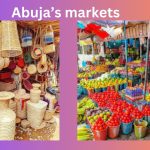Abuja Brand Design. Businesses in Abuja must establish a strong brand identity.
However, a lot of companies make mistakes when developing their brands.
By avoiding these typical mistakes, you can build a powerful, enduring brand that appeals to your target market.
Abuja Brand Design. This article offers answers to common brand design questions and highlights common mistakes to avoid.
1. Not Paying Attention to Your Target Market
A brand won’t succeed if it can’t establish a connection with its target market.
Your target audience should find your brand’s imagery, tone, and messaging appealing.
Ask yourself who your ideal client is and what they care about before you start designing.
By doing this, you can make sure that your brand reflects their interests and values.
People also ask: How can I determine who my branding target audience is?
Analyze your goods or services first.
Who gains the most from your offerings?
Examine the audiences of your rivals.
Conduct surveys and collect data to create a profile based on needs, tastes, lifestyle, and age.
2. Abuja Brand Design: Overuse of Fonts or Colors
Potential customers may be put off by a disorganized brand.
Make sure your color palette is consistent and straightforward.
The same is true of fonts; an excessive number of them can appear jumbled and unclear.
A consistent font style and a well-chosen color scheme produce a more polished and memorable image.
Another question that many have is: How many colors should a brand use?
Limit your color scheme to one primary color and two complementary hues.
All branding materials should use them in the same way.
This produces a harmonious, eye-catching appearance.
3. Not Developing a Guide to Brand Style
Maintaining consistency is challenging in the absence of a brand style guide.
A style guide can help all team members understand the proper use of colors, typefaces, logos, and other brand elements.
Businesses that want their brand to appear polished and consistent throughout time must have it.
Also, many ask: What ought to be in a brand style guide?
Color schemes, typeface selections, logo usage, and tone of voice should all be covered in a brand style guide.
Consistency across all platforms can be maintained by providing examples and thorough instructions.
4. Selecting a Sturdy Logo Design
Your logo must be adaptable.
Large screens can display intricate logos beautifully, while smaller screens or printed items may struggle to identify them.
Make a logo that is simply adjustable and scalable for a range of platforms.
What makes a logo adaptable is another question that people have.
A simple, unambiguous logo that can be altered to fit various backgrounds and sizes is called a versatile logo.
Try to create a design that can be easily recognized as a little icon or even in black and white.
5. Neglecting Branding on Social Media
The social media presence of your brand is essential in the current digital era.
Ensure that the design of your brand is optimized for social media sites like Facebook, Instagram, and Twitter.
This entails using similar color schemes and themes throughout your postings and designing profile and cover photos that represent your brand.
Another question that many have is: How can I differentiate my business on social media?
All of your postings should have the same color scheme, logo, and tone.
For simple content generation that maintains your brand identity, think about developing templates.
6. Abuja Brand Design: Lack of a Distinct Brand Voice
The way your company “speaks” to its audience is known as its brand voice.
Your brand could become just like its rivals if you don’t have a distinctive voice.
Having a unique tone makes you stand out and establish a stronger connection with your clients.
Choose and adhere to your brand’s personality type: informal, formal, comical, or inspirational.
Additionally, they inquire as to what a brand voice is and why it matters.
Your company’s personality in written and spoken communication is known as your brand voice.
It makes your brand more memorable by fostering an emotional bond with your consumers.
7. Ignoring the Value of Consistency in Brands
Maintaining consistency in your brand design fosters audience familiarity and trust.
Your brand may look haphazard if your typefaces, colors, and logo change on several platforms.
To maintain uniformity across all platforms, including your website, social media accounts, and tangible goods, use your brand style guide.
Another question people have is: How can I guarantee brand consistency?
The greatest approach to guaranteeing consistency is with a brand style guide.
Regularly evaluate items for alignment and train your team on brand requirements.
8. Making design elements too complicated
In branding, simplicity is essential.
A lot of elements or messy designs can confuse your readers.
A sleek, uncomplicated style frequently exudes sophistication and expertise, making your company appear reliable and approachable.
People also wonder why brand design should be simple.
Your brand is easier to identify and recall when it is simple.
It produces a polished, eye-catching visual that is simple to interact with.
9. Neglecting Cultural Significance
Your Abuja local audience should be drawn to your brand.
The significance of colors, symbols, or words in Nigerian culture is crucial to considering its cultural relevance.
A culturally sensitive brand values its audience’s values and fosters a stronger connection with the local market.
How do I make sure my brand design is culturally appropriate? is another question people have.
Examine your target market’s cultural meanings, colors, and symbols.
Speak with locals or professionals in the field who are aware of the preferences of your audience.
10. Abuja Brand Design: Ignoring Expert Opinion
Expert advice is crucial while designing a brand.
Designers are knowledgeable about user experience concepts, current trends, and how to make a powerful visual impression.
Without professional advice, you may miss crucial design components or make decisions that don’t adhere to best practices.
People Also Ask: Does brand design need hiring a professional?
A professional designer can add a degree of skill and refinement that is difficult to do on your own, yet it is not always required.
Purchasing expert input guarantees that your brand will appear polished and ready for the market.
Conclusion
Abuja Brand Design. Your company can save time and money by avoiding these brand design errors.
In Abuja‘s cutthroat market, your brand may make a lasting impression with consistency, cultural sensitivity, and careful planning.
Abuja Brand Design. Keep in mind to put your audience first, maintain your style, and ask for input when necessary.










